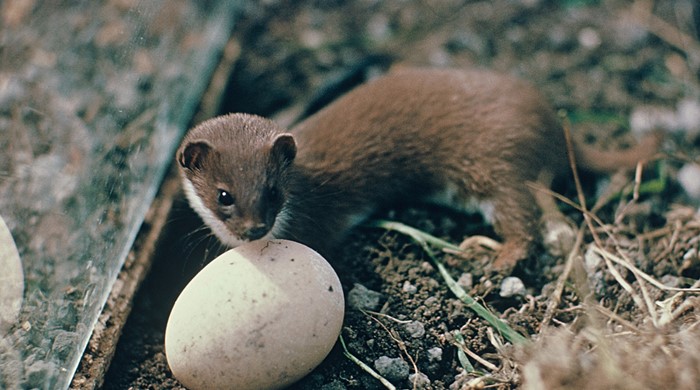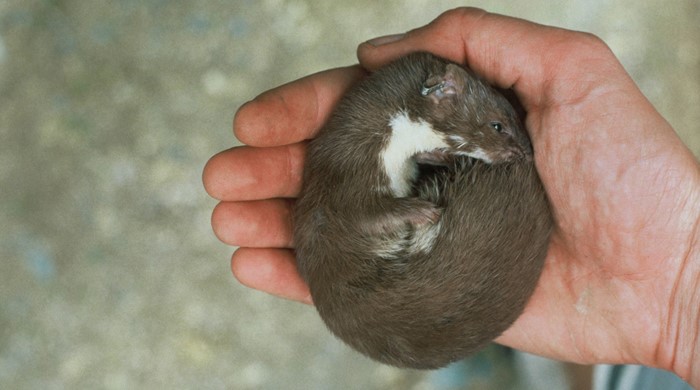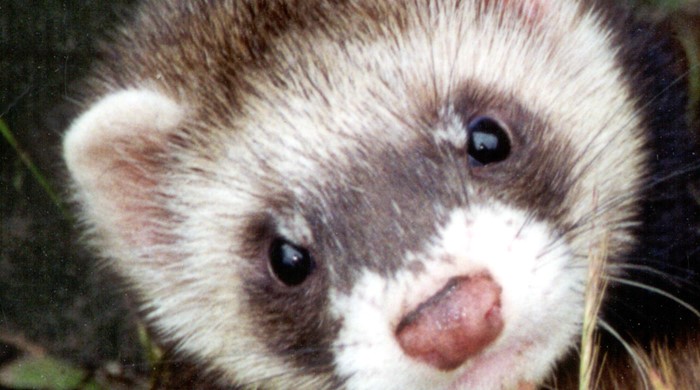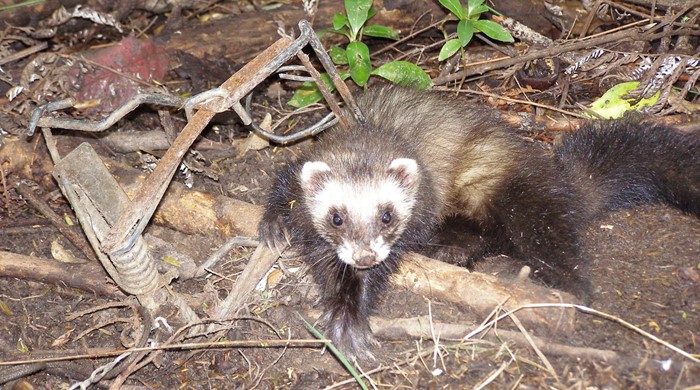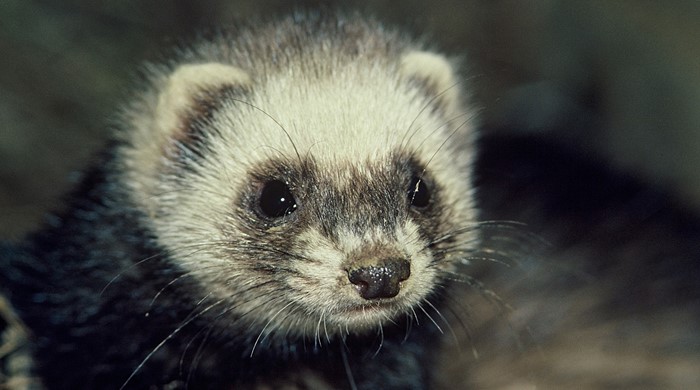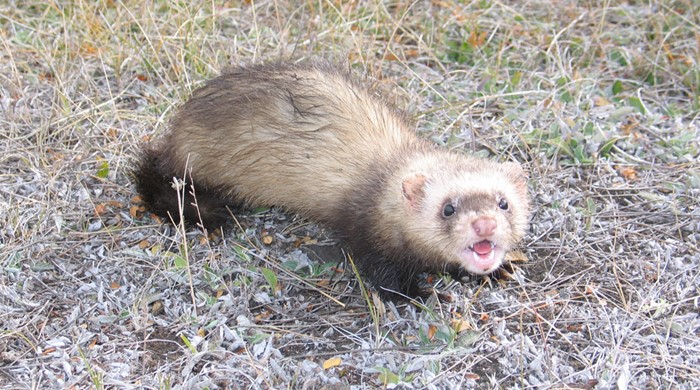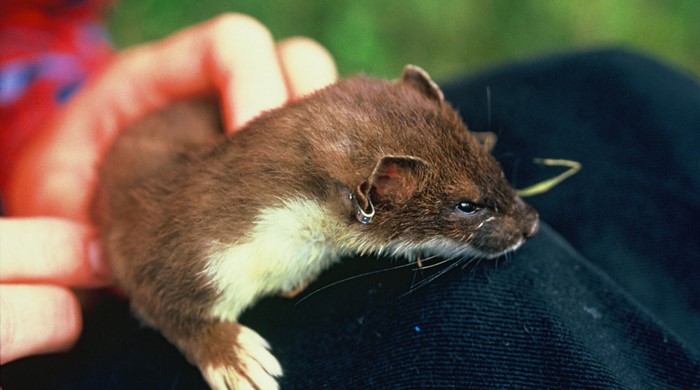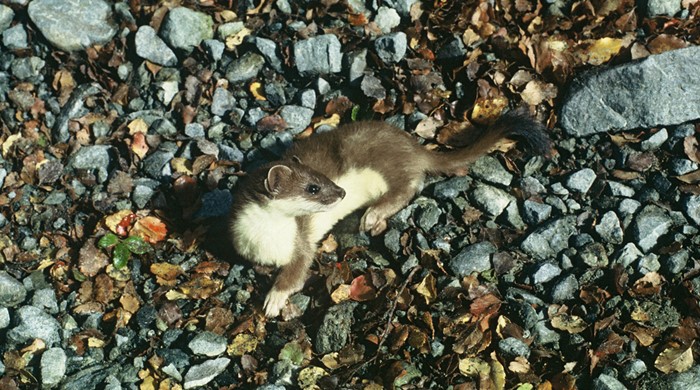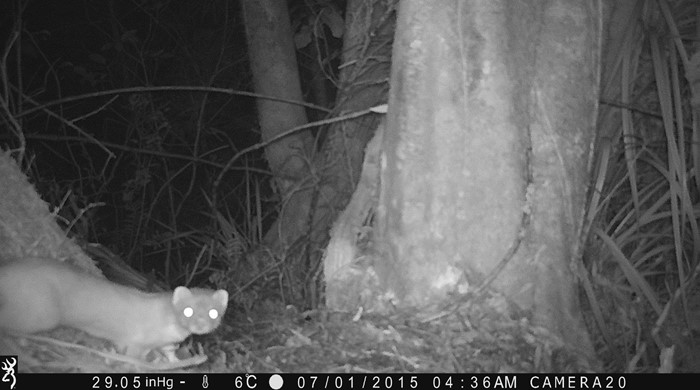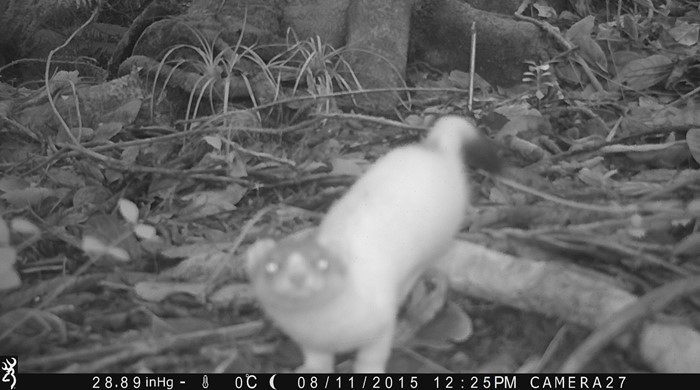Mustela furo, M. erminea, M. nivalis
Mustelids (ferret, stoat, weasel)
Family: Mustelidae
Origin: Europe
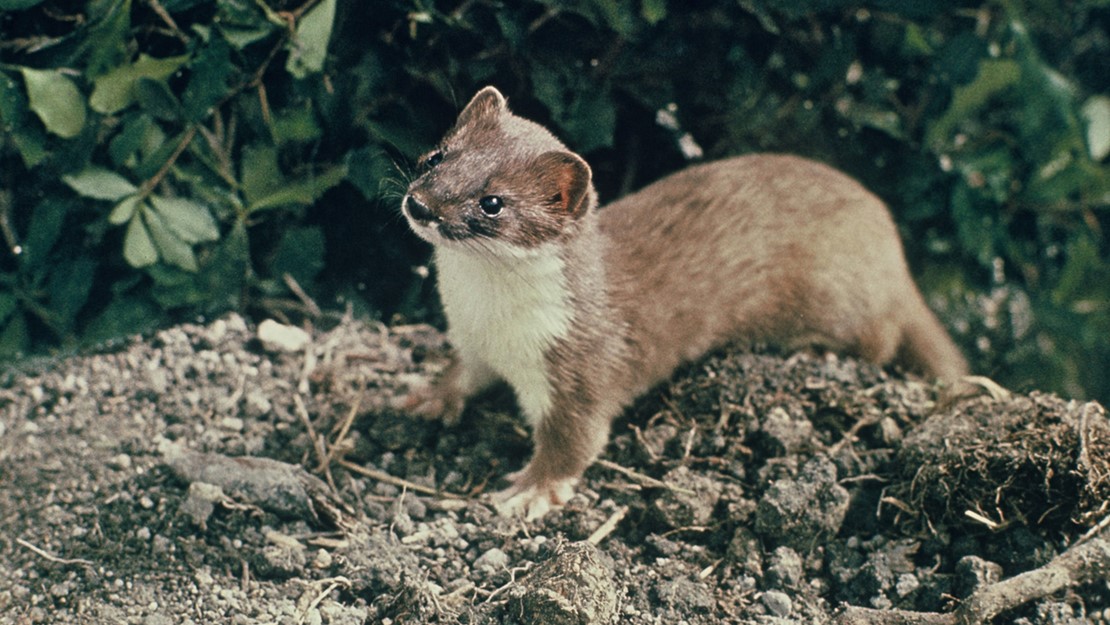
Regional Pest Management Plan (RPMP) status
- Waiheke — Eradication
- Kawau — Eradication
- Parkland with Significant Ecological Areas — Site-led (on-park only)
- Hauraki Gulf Controlled Area pest — Site-led
- Hauraki Gulf Controlled Area Notice pest
- Whole region — Sustained control
- Waitākere Ranges Heritage Area priority status
General description
Ferrets are the largest of the mustelids (600-1,300 g) and are distinguished by a dark 'mask' across the eyes.
Stoats are smaller (200-350 g) and are orange-brown with a white-cream underbelly and a black tip at the end of the tail.
Weasels are the smallest (60-120 g) and are orange-brown with a white-cream underbelly and a uniformly brown tail.
What you need to know
To help protect our environment:
- You must not breed, distribute, release or sell any mustelid within the Auckland region.
- In the future, all commercial transport operators moving goods or people to or among Hauraki Gulf islands will need to have a Pest Free Warrant.
- Anyone intending to move a building to or among Hauraki Gulf islands must notify Auckland Council at least 10 working days prior to movement so that an inspection can be arranged.
Habitats
Forest, scrub, grasslands, braided rivers, alpine areas, coastal areas, pasture.
Impact on environment
Preys on native birds, amphibians, reptiles and invertebrates. Particularly threatens ground-nesting, cavity-nesting and forest birds. Can act as vectors of diseases such as canine distemper and bovine TB.
Control
Management
If you see a mustelid on a pest-free island within the Tīkapa Moana/Hauraki Gulf, please report it to Auckland Council at pestfree@aucklandcouncil.govt.nz.
Please refer to the Pest animal control guidelines for information on how to control mustelids, or contact Auckland Council at pestfree@aucklandcouncil.govt.nz.
